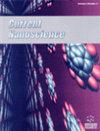Synthesis of Silver Nanoparticles Using Haplophyllum robustum Bge. Extract: Antibacterial, Antifungal, and Scolicidal activity against Echinococcus granulosus Protoscolices
IF 1.5
4区 材料科学
Q4 BIOTECHNOLOGY & APPLIED MICROBIOLOGY
引用次数: 0
Abstract
Background: Silver nanoparticles (AgNPs) biosynthesized via the deployment of plant extractives have garnered much attention, especially due to their antimicrobial properties. Herein, the green synthesis of silver nanoparticles has been accomplished using the aqueous extract of Haplophyllum robustum, which includes a study of its antibacterial, antifungal, and scolicidal activity. Methods: The preparative process was followed by characterization using UV-Vis spectroscopy, and the ensuing spherical AgNPs of average size 7-25 nm were identified by Dynamic Light Scattering (DLS), X-Ray Diffraction (XRD), Fourier Transform Infrared Spectroscopy (FTIR), Scanning Electron Microscopy (SEM), and Transmission Electron Microscopy (TEM). The antibacterial, antifungal, and scolicidal activities of AgNPs were assessed by deploying disc diffusion and microdilution methods against four standard bacteria and four typical Candida species and liver hydatid cyst protoscoleces, where they exhibited good biological activity. Results: The results showed that the greener synthesis of silver nanoparticles using the aqueous extract of renewable and abundant H. robustum plant is a simple, inexpensive, and safer alternative that does not use any toxic or harmful substances. Conclusion: Thus, with minimal or no side effects, this approach to AgNPs bodes well for their appliances as antibacterial, antifungal, and scolicidal agents.利用 Haplophyllum robustum Bge.提取物:对粒状棘球蚴原鳞片的抗菌、抗真菌和杀菌活性
背景:利用植物提取物生物合成的银纳米粒子(AgNPs)因其抗菌特性而备受关注。在此,我们利用厚朴的水提取物完成了银纳米粒子的绿色合成,包括对其抗菌、抗真菌和杀菌活性的研究。研究方法:制备过程之后使用紫外可见光谱进行表征,随后使用动态光散射(DLS)、X 射线衍射(XRD)、傅立叶变换红外光谱(FTIR)、扫描电子显微镜(SEM)和透射电子显微镜(TEM)对平均粒径为 7-25 nm 的球形 AgNPs 进行鉴定。通过盘扩散法和微量稀释法评估了 AgNPs 对四种标准细菌、四种典型念珠菌和肝包虫原虫的抗菌、抗真菌和杀鳞活性,结果表明 AgNPs 具有良好的生物活性。结果显示结果表明,利用可再生的大量 H. robustum 植物的水提取物合成银纳米粒子是一种简单、廉价和安全的替代方法,不使用任何有毒或有害物质。结论因此,AgNPs 的这种方法副作用极小或没有副作用,预示着它们可以很好地用作抗菌、抗真菌和杀菌剂。
本文章由计算机程序翻译,如有差异,请以英文原文为准。
求助全文
约1分钟内获得全文
求助全文
来源期刊

Current Nanoscience
工程技术-材料科学:综合
CiteScore
3.50
自引率
6.70%
发文量
83
审稿时长
4.4 months
期刊介绍:
Current Nanoscience publishes (a) Authoritative/Mini Reviews, and (b) Original Research and Highlights written by experts covering the most recent advances in nanoscience and nanotechnology. All aspects of the field are represented including nano-structures, nano-bubbles, nano-droplets and nanofluids. Applications of nanoscience in physics, material science, chemistry, synthesis, environmental science, electronics, biomedical nanotechnology, biomedical engineering, biotechnology, medicine and pharmaceuticals are also covered. The journal is essential to all researches involved in nanoscience and its applied and fundamental areas of science, chemistry, physics, material science, engineering and medicine.
Current Nanoscience also welcomes submissions on the following topics of Nanoscience and Nanotechnology:
Nanoelectronics and photonics
Advanced Nanomaterials
Nanofabrication and measurement
Nanobiotechnology and nanomedicine
Nanotechnology for energy
Sensors and actuator
Computational nanoscience and technology.
 求助内容:
求助内容: 应助结果提醒方式:
应助结果提醒方式:


